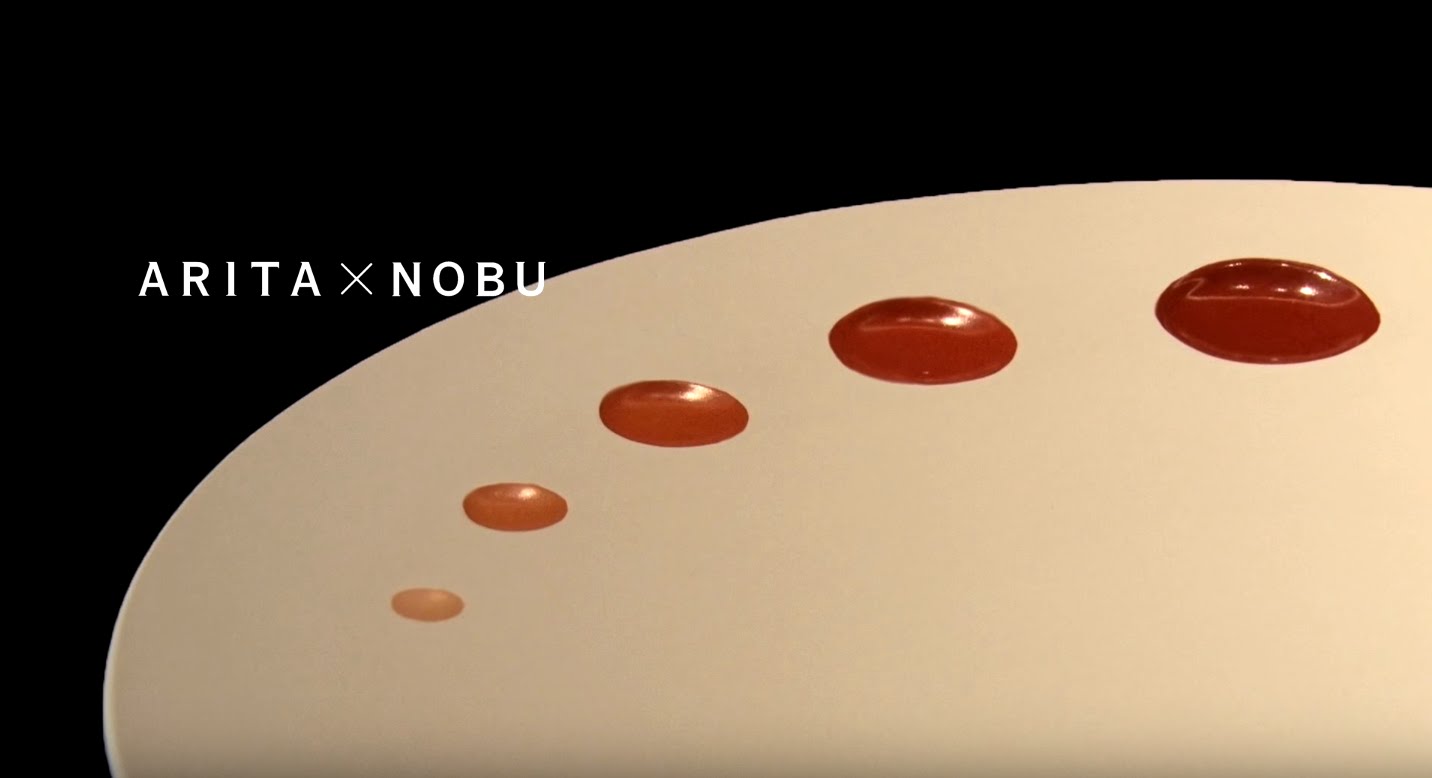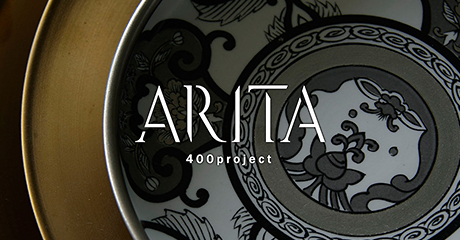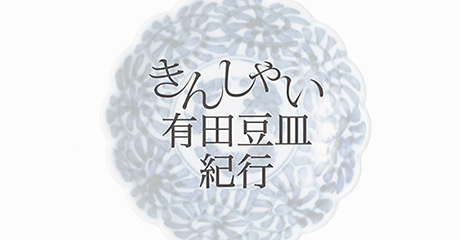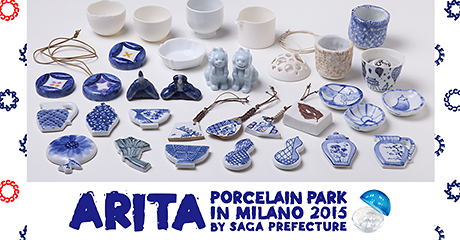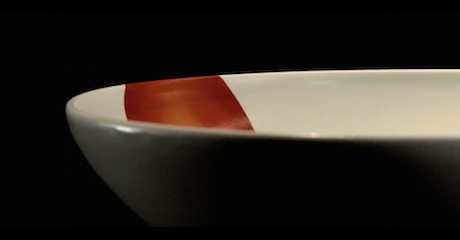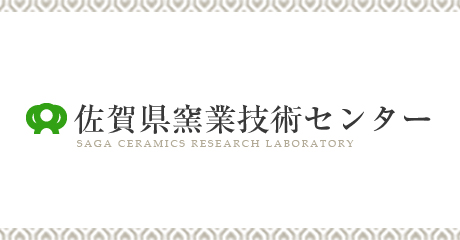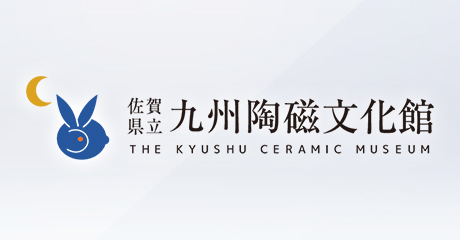1966: The 350th anniversary and the rediscovery of Arita porcelain against the light and shade of a booming economy
Arita, a town of about 20,000 and located in a valley surrounded by forested mountains, is renowned for its ceramics, and a little-known fact is that the town is home to as many as 15 ceramic museums; the whole region as well as being the hub of the ceramics industry is a living porcelain theme park.*1
The museums include the Saga Prefectural Kyushu Ceramic Museum, History and Folklore Museum of Arita, Arita Ceramic Art Museum, Fukagawa Seiji Museum and the Kakiemon, Imaemon, and Koransha Museums of Ceramic Antiques; every time we visit these original and characteristic museums, we make new discoveries and it is easy to be awed by the depth of Arita’s ceramic history and culture and the importance of this industry to the town.
It was the 350th anniversary of Arita porcelain that laid the foundations of an Arita theme park attractively showcasing all aspects of ceramics culture such as its history, art, and technology. From the birth of civilization ceramic ware began life as practical utensils and in today’s industries as well, ceramics are an important industrial material on par with iron and plastics. They are also representative artworks of many of the world’s cultures and civilizations. This group of museums clustered in Arita gives important insights into the study of civilization, and the 350th anniversary was a focal point to explore such historical matters and values.
The Saga Prefectural Kyushu Ceramic Museum is the leader among the town’s museums, and its construction was the most important project in the 350th anniversary of 1966; the museum was opened 14 years later in 1980.*2
Other important planned hard projects were the relocation and reconstruction of the ceramics research laboratory and establishment of a college of ceramics. Soft projects were also initiated, such as the compilation of an Arita Town History, the erection of a memorial monument to earlier generations of potters celebrating their great workmanship and achievements in supporting the development of Arita porcelain, and the production of an Arita folk dance and song Chirorin-bushi.
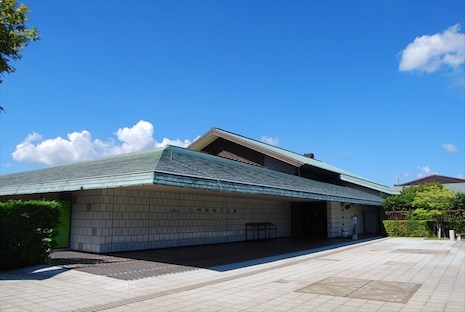
Eighty-three million yen spread over 11 years was allocated to commission a range of knowledgeable authors to compile the Arita Town History; it is a 5,632 page, 11 volume work of epic proportions and is a comprehensive account of the town’s history, politics and society, incorporating much valuable information on the ceramics industry, old kilns, ceramics, and commerce; one volume alone is a summary of the local Sarayama dialect.
The monument to earlier potters was erected with gratitude to the many thousands of nameless artisans who developed Arita porcelain; it took 15 years and was completed in 1982. The monument was fittingly created out of old fireproof bricks originally used for climbing kilns and is located adjacent to the Izumiyama Quarry and the History and Folklore Museum of Arita. Since its inauguration, the monument has stood quietly watching over the porcelain town of Arita.
The people of Arita love festivals and in the anniversary year a song Chirorin-bushi and dance sara odori were written and choreographed. The dancing with small dishes in both hands, reminiscent of castanets, was performed to a song sung by the famous Misora Hibari and music written by hit song writers Koga Masao (composition) and Nishizawa Sou (lyrics). The choreography was created by the Saruwaka School, the founder of Edo Kabuki. It is still remembered today as a particularly splendid occasion when in October 1967, in the schoolyard of Arita Technical High School, the impressive dance was performed by the town people wearing matching yukata (cotton kimono).*3
In 1966, Japan was in the middle of the Izanagi boom, a period of great prosperity and rapid economic development; the population exceeded 100 million for the first time; television was quickly spreading; and the TV advertising revenues of the advertising agency Dentsu surpassed those for newspapers for the first time in this year. The Beatles performed in the Nippon Budokan, passenger cars such as the Nissan Sunny or Toyota Corolla became hit products, and miniskirts were all the rage; it was a truly booming era, almost unimaginable when viewed from the low economic growth of the 21st century.
However, Arita Town in those days was facing serious financial difficulties incurred by needed improvements to its infrastructure and the response to natural disasters; the town was unable to enjoy these exuberant and prosperous times. This period of high economic growth was also the beginning of a long-lasting ordeal for traditional industries.
Although productivity improved thanks to post-war mechanization, marketing lagged behind, resulting in excessive inventory in many potteries. In addition, many youngsters moving to the urban areas led to a shortage of skilled workers, and at the same time, along with a rise in prices, labor costs kept rising. Furthermore, medium and small potteries were facing challenges to develop products meeting ever diversifying consumer preferences arising from the economic growth.*4
Even so, the 350th anniversary of Arita porcelain was taken as a turning point by the people in Arita as a time to take a hard look at the next 50 or 100 years and resolutely tackle a variety of projects to lay the foundations for the Arita of the future.*5 The celebration projects implemented in the threshold between the light and shade of this booming era is testimony to the potential power of the traditional production center Arita and its ability to keep overcoming numerous social changes.
- 1 “Museums in Arita” 2001, Executive Committee for the Exhibition of Famous Treasures in Arita
- 2 “Arita Town History (Commerce II)” 1988, Arita Town
- 3 Izumi Kaneko, “Distant View of Sarayama III, Ujo Lyrics and Koga Melody: Local Song in the Year of Flood Damage” in “Walking through the History of Arita Sarayama from Women’s Viewpoint” 1998, Arita Town Board of Education
- 4 Isao Shimohirao, “A Study of Modern Traditional Industries: Analysis of Recent Economic Structure of Arita Porcelain” 1978, Shinhyoron Publishing
- 5 Yoko Ozaki, “Arita 50 Years Ago: 350th Anniversary of Arita Porcelain” in Quarterly Journal Sarayama No. 102” 2014 summer, History and Folklore Museum of Arita




